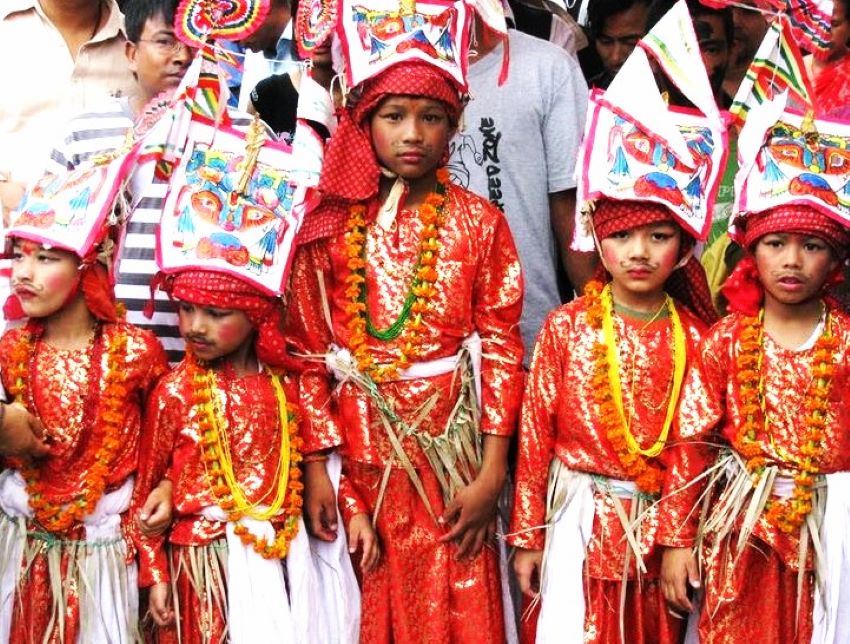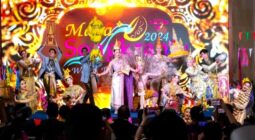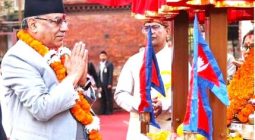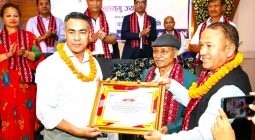Nepal is the land of heady mixture of unique culture proudly preserved; mind boggling adventure and remarkable natural beauty. It is a land where foreigners can revitalize their mind, body and soul amidst scenery.
The peaceful coexistence of multi-religious systems and beliefs is one of the most fascinating aspects of Nepal, where 70 ethnic groups with their own religion, cultures, languages and life-styles exist, and is unique among the cultures of the world.
Nepal’s festivals are dynamic, enthralling. The influx of new sights and sounds are full of energy and life, and rich with genuine excitement.
Festivals are the lenses. In Nepal, every festival traditionally begins with something religious and moves with spontaneous spirit into a pleasant family feast. This is because, for Nepalese, religion has always influenced and has been the core of Nepali culture.
Festivals also offer foreigners a dramatic glimpse of Nepal’s people when they are at their happiest and most relaxed. Nepal’s wonderful cultural heritage is an invaluable resource, one which the Nepalese are striving to preserve.
No doubt, Nepal’s festivals rooted in the country’s history, mythology and religion, honour and propitiate the multitude of gods, control malicious spirits, or celebrate mythological victories over evil.
Nepalese festivals celebrate religious to historical aspects, agricultural to seasonal changes and legendary fun. Above all, a festival is a social occasion, and an affirmation of the ancient and strong bonds of religion and culture. The festivals of Nepal retain their authenticity, especially in the rural areas; they are not performances put on solely for tourists, but rather are the genuine expressions of vital cultures and religions.
The festivals and the ways of a country observe form the nation’s culture. Festivals in Nepal are reckoned not only as occasions to indulge in eating, drinking and making merry but also as occasions when one is to devote some of one’s time to the worship of and meditation upon gods and goddesses in different forms.
Foreigners used to say that “In Nepal, every other building is a temple; every other day is a festival”.
Therefore, among the many festivals Gaii Jatra is one of them which has its own value. Hindus and Buddhist across the nation and worldwide today are celebrating the festivals of Janai Purnima and Gai Jatra.
Though the Jania Poornima and Gai Jatra fall on separate day but this year according to the Nepal Panchanga Nirnayak Bikash Samiti, due to the change in dates, the Raksha Bandhan, Janai Purnima and Gai Jatra festivals fell on the same day. Thus, it is being observed today, August 31.
In Newari language, it is also called Gunupoonhi. On this full moon day of Shrawan, all those Hindu males who have holy threads invested on their bodies bathe in the Bagmati or Bishnumati or in the Holy river and change their new holy thread for the old one.
It is also the day when Brahman priests go round the houses of their acquaintances and relatives and bind holy threads round their wrists as a protective against evils on this day.
In a Nepalese home, a special dish called “Kwaati” made of nine kinds of cereals, beans and peas is prepared. Kwaati contains substances and supplies of calories, making up for the Vitamin deficiencies.
Thousands of devotees worship lord Shiva at Pashupatinath Temple and in Kumbheswor Temple in Patan take holy dips in ponds. Religious fairs are being held in Gosaikunda in Rasuwa district and in Triveni in Jumla.
Every year, Raksha Bandhan is observed to celebrate the bittersweet relationship shared by siblings. Every year the festival falls on the Poornima Tithi or the full moon day of the Shukla Paksha in the month of Shravan (monsoon).
On this day, sisters tie a rakhi (ribbon) on the wrists of their brothers as a symbol of love and fraternal affection and pray for their long life and prosperity.

According to Hindu mythology, Draupadi tended to a wounded Lord Krishna after she injured his finger on the Sudarshan Chakra by tying a piece of her saree to his finger. In return, he vowed to protect her dignity.
For Gai Jatra, people are parading the streets, either with a cow or people dressed like cows, in memory of relatives who have passed away within a year. It is customary to feed them milk, fruits, bread, chiura, and curd.
It is religiously believed that by doing this, the person who died throughout the year will cross Vaitrani by holding the cow’s tail.
On the occasion of Gaijatra, people of different communities across the nation also organise different programs of a satirical nature.
On the day of Gaijatara, either actual cows or human beings with oval shaped baskets with painted pictures of a cow and Ganesh on either side of the basket with straw horns to represent cows are sent round the town.
This is generally done by the bereaved families under the belief that the gate to heaven will be pushed open with the horns of the cows for the free passage of the departed soul.
This part of the festival is completed by mid-day and in the afternoon, the festival assumes a gay appearance by the appearance of clowns and buffoons all over the town. The whole week the clowns and the buffoons enjoy the liberty of making fun of all sorts of social, economic and even political ills.
However, with the advent of republic-based democracy, this may not be applied but it was a strong weapon especially during the old politics days.








